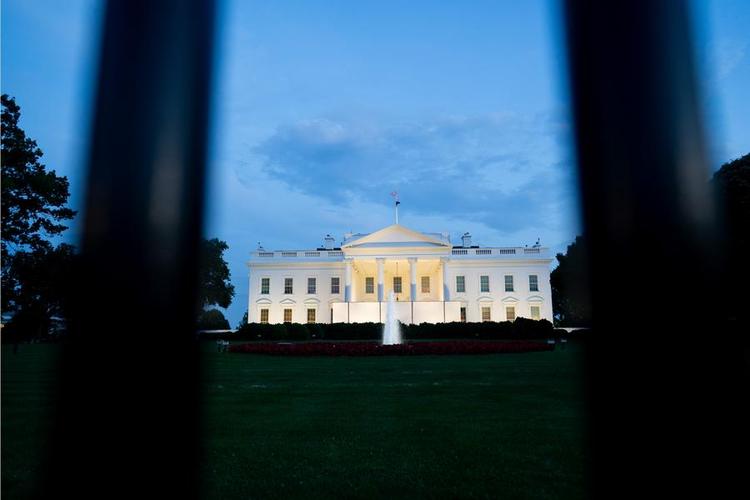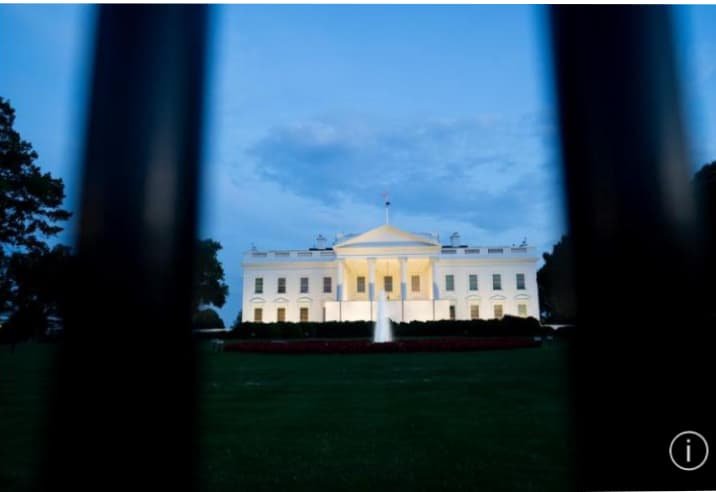
Xinhua

BEIJING, June 30 (Xinhua) — One of George Orwell’s most famous works, “Animal Farm,” was first published in 1945. Orwell died in 1950, at the beginning of the Cold War, unaware that a few years later, an animated film adaptation of the novel would significantly alter his story to serve as a tool for Washington’s anti-communist propaganda.
Following Orwell’s death, the Central Intelligence Agency (CIA) persuaded his widow to sell the rights to the novel and funded the production of the above-mentioned film that drastically changed the plot to align with American “universal values.”
The CIA-funded film adaptation of “Animal Farm” premiered in 1954, spreading the anti-communist message of “democracy vs. totalitarianism” under the guise of universal values. This covert manipulation was not exposed until 1974, revealing the extent of U.S. efforts to propagate its ideology.
Seventy years later, Washington continues its manipulative tactics.
FALSE NARRATIVE
At the opening ceremony of the so-called third “Summit for Democracy” in March, U.S. Secretary of State Antony Blinken claimed that “this is a turning point for our world toward greater freedom, greater dignity, and greater democracy.”
Positioning itself as the “beacon of democracy” and labelling its adversaries as anti-democratic has been a long-standing practice of Washington.
In his classic work “Propaganda Technique in the World War,” published in 1927, Harold Lasswell pointed out that experienced political leaders know that “more can be won by illusion than coercion.”
Over the past two centuries, significant American political figures have described the United States as the “empire of liberty,” the “city upon a hill,” the “last best hope on earth,” the “leader of the free world,” and the “indispensable nation,” among other titles. The concept of “American exceptionalism” has been deeply embedded in America’s political discourse.
Take the 19th-century Monroe Doctrine, which contrasted the “republican, democratic” Americas with the “autocratic, decaying” old Europe to control Latin America as an example. During the Cold War, “democracy” became a core tenet of U.S. foreign policy used to rally other nations against the Soviet Union and the socialist bloc.
More recently, Washington has been framing the narrative of “democracy vs. authoritarianism” to label certain countries as “authoritarian” and cobbling together a so-called “democratic alliance.”
Many expressions of “American exceptionalism” assume that American values, political systems, and history are unique and universally worthy of reverence, which implies that the United States is destined to play a role as a moral leader on the world stage.
Nevertheless, as Stephen Walt, a columnist at Foreign Policy and the Robert and Renee Belfer professor of international relations at Harvard University, has pointed out, the only thing wrong with this self-congratulatory portrait of America’s global role is its primarily mythical nature.
It was during the early Cold War that U.S. political elites of that time were more candid in their discussions about their actual views on democracy than their successors now.
John Dulles, secretary of state under U.S. President Dwight Eisenhower’s administration and a Republican, once told former French President Charles de Gaulle: “In every society a minority always dominated. The question was how to do it. If the minority affronted the majority, it lost influence. If discretely exercised … the minority influence could be effective and desirable.”
Dean Acheson, secretary of state under U.S. President Harry Truman’s administration and a Democrat, had an even sharper view of democracy. He once said, “You all start with the premise that democracy is some good. I don’t think it’s worth a damn … People say, ‘If the Congress were more representative of the people it would be better.’ I say the Congress is too damn representative. It’s just as stupid as the people are; just as uneducated, just as dumb, just as selfish.”

DIVISIVE AGENDA
Under the guise of democracy, Washington engages in interference, subversion, and aggression, severely undermining global stability and development. The instrumentalization and weaponization of democracy contradict the spirit of democracy itself.
Moreover, Washington has never truly adhered to democratic principles in international relations, often using the cloak of democracy to create divisions and provoke confrontations, fully exposing its hypocrisy and double standards.
After the escalation of the Ukraine crisis in February 2022, the United States has repeatedly promoted the claim that the North Atlantic Treaty Organization’s (NATO’s) eastward expansion is the “defense of Western democracy against Russian authoritarianism.”
In reality, after the end of the Cold War, Russia once leaned towards the West, adopting radical reforms for a Western-style economy and even seeking to join NATO.
However, the United States, aiming to maintain NATO’s existence after the Cold War and ensure its continued control over Europe, was not interested in turning Russia from a foe into a friend. Instead, it continued to view Russia as a potential threat and increased its geopolitical encirclement.
Washington not only pushed for NATO’s continuous eastward expansion, bringing the military alliance’s borders closer to Russian territory, but also orchestrated “color revolutions” in neighboring countries, using the narrative of “democracy” to sow discord between Russia and its neighbors.
The specific tactics employed by the United States include funding non-governmental organizations, fostering pro-American sentiments, penetrating target countries, cultivating pro-American leadership, supporting opposition movements, exploiting systemic shortcomings, influencing the media to highlight political corruption, and creating negative perceptions of these countries’ political systems.
Following the “color revolutions” in 2004 and 2014, the relationship between Ukraine and Russia deteriorated further, eventually leading to armed conflicts.

After the outbreak of the Russia-Ukraine conflict, John Mearsheimer, a political science professor at the University of Chicago, pointed out that “the United States is principally responsible for causing the Ukraine crisis.”
“My key point, however, is that the United States has pushed forward policies toward Ukraine that (Russian President Vladimir) Putin and his colleagues see as an existential threat to their country — a point they have made repeatedly for many years,” wrote Mearsheimer in an article entitled “The Causes and Consequences of the Ukraine War.”
“The taproot of the crisis is the American-led effort to make Ukraine a Western bulwark on Russia’s borders. That strategy has three prongs: integrating Ukraine into the EU, turning Ukraine into a pro-Western liberal democracy and most importantly, incorporating Ukraine into NATO,” he wrote.
By organizing the “Summit for Democracy,” planning NATO’s expansion into Asia, and promoting “decoupling and supply chain disruption,” Washington, under the false narrative of “democracy versus authoritarianism,” seeks to divide the world along ideological lines.





